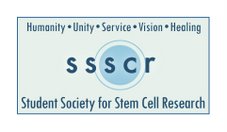March 2008 Volume 8 Number 3
Visit Nature Reviews Cancer online to browse the journal.
Now available at http://ealerts.nature.com/cgi-bin24/DM/y/ejKT0Xztnp0Hja0cZl0Ea
Please note that you need to be a subscriber to enjoy full text access to Nature Reviews Cancer online. To purchase a subscription, please visit:
http://ealerts.nature.com/cgi-bin24/DM/y/ejKT0Xztnp0Hja0a5J0EN
Alternatively, to recommend a subscription to your library, please visit
http://ealerts.nature.com/cgi-bin24/DM/y/ejKT0Xztnp0Hja0sRD0E3
*********************************************************************
Nature Reviews Cancer Impact Factor: 31.583*
(*Journal Citation Reports, Thomson, 2006)
*********************************************************************
=====================================================================
This alert is sponsored by Bio-Rad Laboratories
High-Throughput Biomarker Profiling
http://ealerts.nature.com/cgi-bin24/DM/y/ejKT0Xztnp0Hja0BoKr0Ej
The ProteinChip(R) SELDI system enables the most efficient profiling
of protein biomarkers in large sample sets. The system features chip-based
separation, automated analysis of up to 1,344 samples, and robust analysis
software.
Go to http://ealerts.nature.com/cgi-bin24/DM/y/ejKT0Xztnp0Hja0Bmdj0Ey
=====================================================================
=====================================================================
Cell Death & Differentiation Special Issue on Immunity
In this issue of CDD, several reviews focus on the role of death, at the
cellular level, in immunity.
Select reviews on:
- NK cells at the interface between innate and adaptive immunity
- Apoptosis and the immune system
- Clearance of apoptotic cells by phagocytes
- Mechanisms of granule-dependent killing
Visit CDD online to view these articles at:
http://ealerts.nature.com/cgi-bin24/DM/y/ejKT0Xztnp0Hja0Bm580EN
=====================================================================
=====================================================================
This month's FEATURED article:
Telomerase and cancer therapeutics
Calvin B. Harley
p167 | doi:10.1038/nrc2275
http://ealerts.nature.com/cgi-bin24/DM/y/ejKT0Xztnp0Hja0BoKs0Ek
=====================================================================
From the editors
p157 | doi:10.1038/nrc2352
http://ealerts.nature.com/cgi-bin24/DM/y/ejKT0Xztnp0Hja0BoKt0El
----------------------
RESEARCH HIGHLIGHTS
----------------------
Tumour suppressors: Where to begin?
p159 | doi:10.1038/nrc2336
http://ealerts.nature.com/cgi-bin24/DM/y/ejKT0Xztnp0Hja0BoKu0Em
Genetics: A numbers game
p160 | doi:10.1038/nrc2332
http://ealerts.nature.com/cgi-bin24/DM/y/ejKT0Xztnp0Hja0BoKv0En
Cancer stem cells: Developmental block
p160 | doi:10.1038/nrc2335
http://ealerts.nature.com/cgi-bin24/DM/y/ejKT0Xztnp0Hja0BoKw0Eo
IN THE NEWS
An aspirational combination
p160 | doi:10.1038/nrc2340
http://ealerts.nature.com/cgi-bin24/DM/y/ejKT0Xztnp0Hja0BoKx0Ep
IN BRIEF
Resistance | Oncogenes | Senescence
p161 | doi:10.1038/nrc2339
http://ealerts.nature.com/cgi-bin24/DM/y/ejKT0Xztnp0Hja0BoKy0Eq
Tumour suppressors: One-hit wonder
p162 | doi:10.1038/nrc2334
http://ealerts.nature.com/cgi-bin24/DM/y/ejKT0Xztnp0Hja0BoKz0Er
Metabolism: The importance of polarity
p162 | doi:10.1038/nrc2337
http://ealerts.nature.com/cgi-bin24/DM/y/ejKT0Xztnp0Hja0BoK10Ee
Mouse models: An easier option
p163 | doi:10.1038/nrc2331
http://ealerts.nature.com/cgi-bin24/DM/y/ejKT0Xztnp0Hja0BoK20Ef
Angiogenesis: Blood born killer?
p164 | doi:10.1038/nrc2330
http://ealerts.nature.com/cgi-bin24/DM/y/ejKT0Xztnp0Hja0BoK30Eg
Leukaemia: Lessons from an ancestor
p164 | doi:10.1038/nrc2333
http://ealerts.nature.com/cgi-bin24/DM/y/ejKT0Xztnp0Hja0BoK40Eh
TRIAL WATCH
Long-term protection
p164 | doi:10.1038/nrc2338
http://ealerts.nature.com/cgi-bin24/DM/y/ejKT0Xztnp0Hja0BoK50Ei
TRIAL WATCH
Rapamycin hits the target
p165 | doi:10.1038/nrc2341
http://ealerts.nature.com/cgi-bin24/DM/y/ejKT0Xztnp0Hja0BoK60Ej
----------------------
REVIEWS
----------------------
Telomerase and cancer therapeutics
Calvin B. Harley
p167 | doi:10.1038/nrc2275
A specific telomerase inhibitor and several telomerase therapeutic vaccines are in clinical trials, and other telomerase-based therapies are in preclinical development. What are the advantages and disadvantages of these approaches and which cancer patients might benefit most?
Abstract: http://ealerts.nature.com/cgi-bin24/DM/y/ejKT0Xztnp0Hja0BoK70Ek
Article: http://ealerts.nature.com/cgi-bin24/DM/y/ejKT0Xztnp0Hja0BoKs0Ek
Article series:
Hypoxia and metabolism: http://ealerts.nature.com/cgi-bin24/DM/y/ejKT0Xztnp0Hja0BjxO0Eo
Hypoxia, DNA repair and genetic instability
Robert G. Bristow and Richard P. Hill
p180 | doi:10.1038/nrc2344
Intratumoural hypoxia is a negative prognostic indicator and can underlie therapeutic resistance for many patients. This Review explores the differential biological effects of acute hypoxia versus longer-term, chronic hypoxia on genomic instability and DNA damage repair pathways. What does this mean for therapeutic strategies?
Abstract: http://ealerts.nature.com/cgi-bin24/DM/y/ejKT0Xztnp0Hja0BoK80El
Article: http://ealerts.nature.com/cgi-bin24/DM/y/ejKT0Xztnp0Hja0BoLA0Ev
DNA repair pathways as targets for cancer therapy
Thomas Helleday, Eva Petermann, Cecilia Lundin, Ben Hodgson and Ricky A. Sharma
p193 | doi:10.1038/nrc2342
Can we exploit the DNA repair pathways in cancer cells to increase the efficacy of existing and future cancer treatments? This Review discusses the current state of play.
Abstract: http://ealerts.nature.com/cgi-bin24/DM/y/ejKT0Xztnp0Hja0BoLB0Ew
Article: http://ealerts.nature.com/cgi-bin24/DM/y/ejKT0Xztnp0Hja0BoLC0Ex
Mechanisms linking physical activity with cancer
Anne McTiernan
p205 | doi:10.1038/nrc2325
Up to one-third of cancers are due to excess weight and insufficient physical activity. What mechanisms are involved and can physical activity interventions reduce cancer risk?
Abstract: http://ealerts.nature.com/cgi-bin24/DM/y/ejKT0Xztnp0Hja0BoLD0Ey
Article: http://ealerts.nature.com/cgi-bin24/DM/y/ejKT0Xztnp0Hja0BoLE0Ez
Small integrin-binding ligand N-linked glycoproteins (SIBLINGs): multifunctional proteins in cancer
Akeila Bellahcene, Vincent Castronovo, Kalu U. E. Ogbureke, Larry W. Fisher and Neal S. Fedarko
p212 | doi:10.1038/nrc2345
The family of glycophosphoproteins known as small integrin-binding ligand N-linked glycoproteins (SIBLINGs) are emerging as important players in malignant transformation, invasion and metastasis. Could these proteins be promising diagnostic and prognostic tools, as well as therapeutic targets?
Abstract: http://ealerts.nature.com/cgi-bin24/DM/y/ejKT0Xztnp0Hja0BoLF0E1
Article: http://ealerts.nature.com/cgi-bin24/DM/y/ejKT0Xztnp0Hja0BoLG0E2
----------------------
PERSPECTIVES
----------------------
OPINION
Integrative mathematical oncology
Alexander R. A. Anderson and Vito Quaranta
p227 | doi:10.1038/nrc2329
To achieve a comprehensive mechanistic view of the cancer process do we need to assemble a physically integrated team of interdisciplinary scientists that includes mathematicians? This Perspective discusses the useful insights provided by such an interaction.
Abstract: http://ealerts.nature.com/cgi-bin24/DM/y/ejKT0Xztnp0Hja0BoLH0E3
Article: http://ealerts.nature.com/cgi-bin24/DM/y/ejKT0Xztnp0Hja0BoLI0E4
Article series:
MYC: http://ealerts.nature.com/cgi-bin24/DM/y/ejKT0Xztnp0Hja0BoLJ0E5
OPINION
MYC in mammalian epidermis: how can an oncogene stimulate differentiation?
Fiona M. Watt, Michaela Frye and Salvador Aznar Benitah
p234 | doi:10.1038/nrc2328
The discovery that the oncogene MYC can stimulate differentiation rather than proliferation in human epidermal stem cells was, understandably, greeted with scepticism. However, subsequent studies have revealed important concepts that are relevant to the function of MYC in tumorigenesis.
Abstract: http://ealerts.nature.com/cgi-bin24/DM/y/ejKT0Xztnp0Hja0BoLK0E6
Article: http://ealerts.nature.com/cgi-bin24/DM/y/ejKT0Xztnp0Hja0BoLL0E7
----------------------
CORRESPONDENCE
----------------------
Correspondence: FOXM1: The Achilles' heel of cancer?
Senthil K. Radhakrishnan and Andrei L. Gartel
doi:10.1038/nrc2223-c1
http://ealerts.nature.com/cgi-bin24/DM/y/ejKT0Xztnp0Hja0BoLM0E8
Correspondence: Targeting FOXM1
Stephen S. Myatt and Eric W.-F. Lam
doi:10.1038/nrc2223-c2
http://ealerts.nature.com/cgi-bin24/DM/y/ejKT0Xztnp0Hja0BoLN0EA
Corrigendum: Targeting the protein kinase C family: are we there yet?
Helen J. Mackay and Christopher J. Twelves
doi:10.1038/nrc2350
http://ealerts.nature.com/cgi-bin24/DM/y/ejKT0Xztnp0Hja0BoLO0EB
=====================================================================
Nature Protocols - Qualitative, Authoritative Protocols in Print and Online
Did you know that you can now purchase a personal print subscription to Nature Protocols?
Receive your own personal print copy delivered directly to your door each month, plus access to the journal online.
Subscribe today to ensure you have the latest protocols at your fingertips.
Visit http://ealerts.nature.com/cgi-bin24/DM/y/ejKT0Xztnp0Hja0uoj0ED
=====================================================================
You have been sent this Table of Contents Alert because you have opted in to receive it. You can change or discontinue your e-mail alerts at any time, by modifying your preferences on your nature.com account at:
http://ealerts.nature.com/cgi-bin24/DM/y/ejKT0Xztnp0Hja0Zzu0E7
(You will need to log in to be recognised as a nature.com registrant).
For further technical assistance, please contact our registration department:
registration@nature.com
For print subscription enquiries, please contact our subscription department:
subscriptions@nature.com
For other enquiries, please contact our customer feedback department:
feedback@nature.com
Nature Publishing Group | 75 Varick Street, 9th Floor | New York | NY 10013-1917 | USA
Nature Publishing Group's worldwide offices:
London - Paris - Munich - New Delhi - Tokyo - Melbourne -
San Diego - San Francisco - Washington - New York - Boston
(c) Copyright 2008 Nature Publishing Group
=====================================================================










